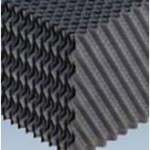Submerged Aerobic Fixed Film Reactor (SAFF) is a cost-effective method of waste water treatment and sewage sanitation that is primarily used in residential and commercial complexes. This technology primarily has on the three stages that are Primary Settlement, Secondary Treatment and Final Settlement / Clarification.
In the wastewater industry, SAFF Technology is seen as the simple and cost effective method of commercial and residential sewage sanitation / waste water treatment, particularly for small to medium sized treatment plants where available land is limited, and where full time operational manning would be uneconomical. A well designed Submerged Aerated Filter plant has no moving parts within its process zones, any serviceable items will be positioned to access easily without disrupting the ongoing treatment.
Submerged Aerated Fixed Films (SAFF) Technology
Submerged Aerated Fixed Films (SAFF) technology is a process used to reduce the organic loading of residential and commercial sewage / waste water, and in doing so will reduce the Biological Oxygen Demand (BOD) and a significant quantity of Suspended Solids (SS) which if otherwise untreated would contaminate river and sea outfalls, in other words it is used to substantially improve effluent discharge quality.
As with traditional sewage treatment, Submerged Aerated Fixed Films Technology too uses three stages of dealing with commercial and residential sewage / waste water.
A picture showing SAFF Media.
1. Primary Settlement: Where larger solids settle into the bottom of the primary tank and are removed periodically as sludge, and where other buoyant material which floats upwards is to be removed usually by a scraping/screening method.
2. Secondary Treatment: Where the biodegradable Organic Matter is degraded by the biomass on the SAFF media.
3. Final Settlement / Clarification: Where degraded solids are settled out of the biological treated effluent.
The Submerged Aerobic Fixed Film (SAFF) process uses support media to retain an active biomass to reduce the influent BOD Levels. Tubular diffusers are used with the SAFF media giving a good air dispersal and low level of blockage due to growth of biological film.
SAFF reactor is a type of aerobic attached growth treatment process. Small foot print area, stable process, lesser sludge production and modular installations are the key features of SAFF process. Essentially SAFF system is a hybrid reactor where attached growth and suspended growth activity takes place simultaneously.
This technology utilizes an aerobic fixed film process that is a combination submerged attached growth and activated sludge processes.
Advantages :
1. No sludge re-circulation is required to maintain MLSS as in the case of conventional aeration system.
2. Can be designed to any size to deal with larger flow and loads.
3. Fine bubble diffused aeration used generally reduces the energy requirements as compared to surface aerators.
4. Modular design allows easy installation.
5. The tank does not need to be drained for access to the diffusers or media.
6. SAFF system takes higher shock loads without reducing the plant performance because of large quantity of Bio mass available in the reactor.
7. SAFF system takes higher shock loads without reducing the plant performance because of large quantity of Bio mass
available inside the reactor.
8. SAFF supports low sludge generation, low Odour and low visual impact.
9. Solids Retention Time (SRT) of can vary based on influent flow without negative process impact.
10. Modular expandability.
11. Less susceptible to upsets due to flow variations.
12. Simple, yet sophisticated.
13. Maintenance requirements are simple.

